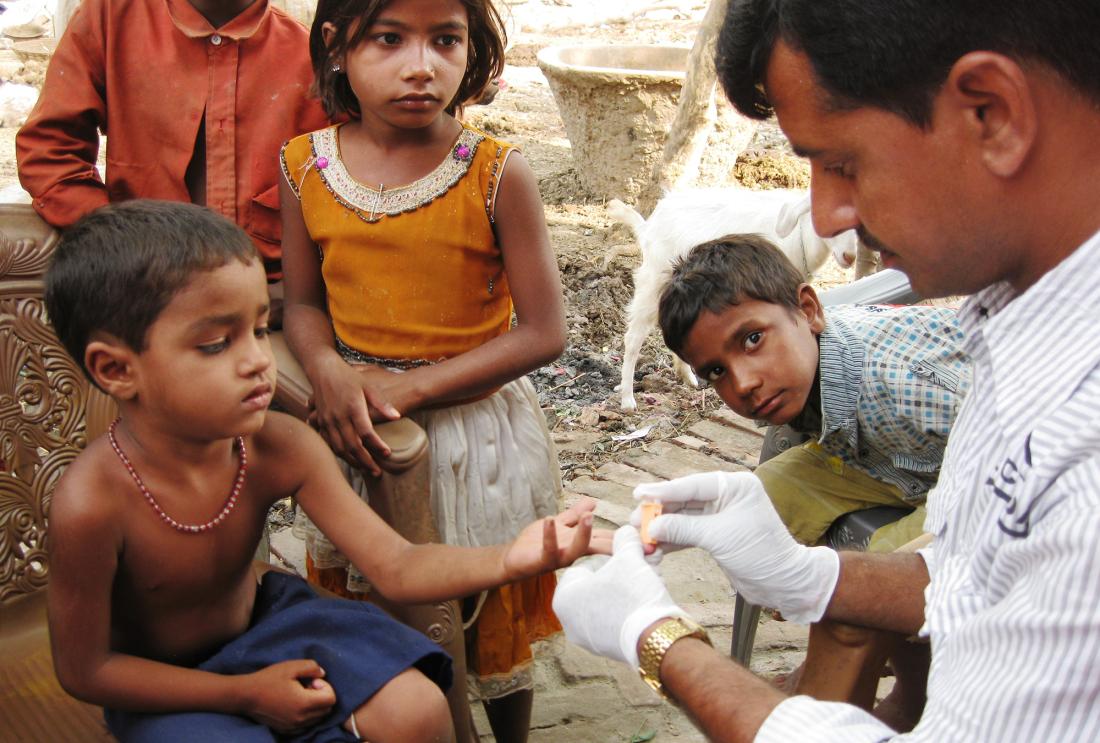Evaluating the Effectiveness of Different Distribution Channels for Double Fortified Salt (DFS) in Bihar
- Anemia
- Information
- Health care delivery
- Pricing and fees
Policy issue
Over one-third of the world's population is estimated to suffer from anemia, and more than half of all cases can be traced to iron deficiency. Iron Deficiency Anemia (IDA) has been linked to low productivity in adults, and slowing of cognitive and physical development among children; among pregnant women, severe anemia can result in low birth weight and child mortality. Iron supplements can reduce anemia, but ensuring regular intake and widespread coverage is difficult. Fortifying foods with iron offers an attractive way to distribute supplementation widely; however, past evaluations suggest that the choice of fortified food and the channel for its delivery are important policy decisions. The food chosen must be easily and inexpensively fortifiable and widely consumed, while the delivery channels need to have wide geographic and socioeconomic reach.
Context of the evaluation
In India, an estimated 24 percent of men and 56 percent of women are anemic, and prevalence among women and children in India actually increased between 1998 and 2005. Prevalence rates in Bihar are among the highest in India: 68 percent of ever-married Bihari women and 88 percent of Bihari children under the age of 35 months are anemic. The Health Department in Bihar has made reducing anemia a key priority and has committed to reduce the prevalence of anemia by 25 percent among adolescents and women of reproductive age.
Although there are numerous foods that can be fortified, including flour, milk products, and fish sauce, salt , which even poor and isolated populations buy packaged, may be the best choice to reach those most in need. Among such households in rural Bihar, most meet their demand for salt either through local commercial stores called kiranas' or through the public distribution system—a government sponsored food security system that provides subsidized food items to the poor. Although several state government agencies have begun distributing salt fortified with both iron and iodine (Double Fortified Salt, or DFS) as part of small-scale public programmes and the central government has recently mandated DFS use in mid-day meals for children enrolled in school, there have been no attempts to market DFS to a larger cross-section of the population.

Details of the intervention
This evaluation examined the impact of DFS availability on a set of health and education outcomes, and will also explore the most effective distribution and pricing to increase take-up.
The evaluation proceeded in two phases. The first phase tested the effect of different distribution channels, information campaigns, and discounts on purchase of DFS in 43 randomly selected villages in one district of Bihar. While both kiranas and government-subsidized stores (PDS) had the advantage of exploiting consumers' pre-existing habits, effective marketing schemes are needed to convey the benefits of iron fortification to potential consumers. The first phase also tested the ability of basic marketing (posters); basic marketing plus campaigns designed by the manufacturer; and basic plus manufacturer plus government health worker campaigns to inform households about DFS. In addition, 99 randomly selected households in each village will receive different discount vouchers for DFS, with final sale price ranging from INR 8 to INR 17 per kilogram, in order to estimate price sensitivity of demand for DFS.
Using lessons from phase one, DFS introduced for sale in 200 randomly selected villages, while another 200 randomly selected villages served as a comparison group. One year after the baseline survey, DFS take-up was measured along with health and economic indicators including anemia status, weakness, health, cognitive health, school attendance, workforce participation, and wages.
Results and policy lessons
Project ongoing; results forthcoming.
